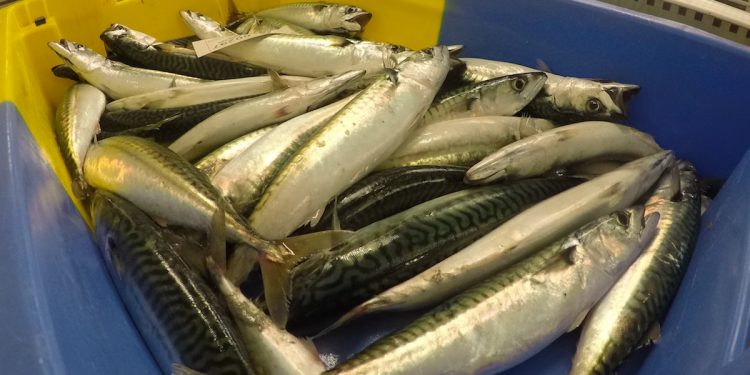The mackerel ecosystem survey has been completed and scientists have located large volumes, but small amounts of juvenile mackerel in coastal waters. The six participating vessels have mapped an area spanning around three million square kilometres.
According to the report published by expedition co-ordinator Leif Nøttestad of the Norwegian Institute of Marine Research, the main objective of the mackerel ecosystem survey was a volume measurement of the Northeast Atlantic mackerel stock, which is used directly in annual stock calculations and ICES quota advice for mackerel.
Acoustic assessment of Norwegian spring-spawning herring and blue whiting were also key objectives, along with tracking Atlantic salmon abundance, systematic plankton surveys and observations of marine mammals.

‘Now we better understand that the mackerel, Norwegian spring-spawning herring and blue whiting are distributed over significant sea areas in the summer,’ Leif Nøttestad reported.
The survey tracked mackerel all the way north to 76°30’N, and surveying vessels had to travel all the way to 78°N to establish the limit of mackerel distribution.
‘We did not find the zero line to the northwest, but we did not have the opportunity to continue there due to time constraints. There were historically high single catches of mackerel in the northernmost oceans with a full 4.5 tonnes of mackerel after 30 minutes of towing at 76°N and 700kg of mackerel close to 77°N. The average size ranged from 214g south to 609g in the northernmost regions, showing that it is the largest mackerel migrating farthest north in the summer. There were several year classes with 2-14 year old mackerel represented in the catches,’ he reports.
‘There were small mackerel catches along the entire Norwegian coast from Hordaland in the south to Finnmark in the north, and in more open sea areas between the northeastern Norwegian Sea and the western Barents Sea. We established the zero line, where there is no more mackerel, along the coast to the north and towards the Barents Sea. It was also striking how little juvenile mackerel was mapped along the Norwegian coast this year compared to last year.’









